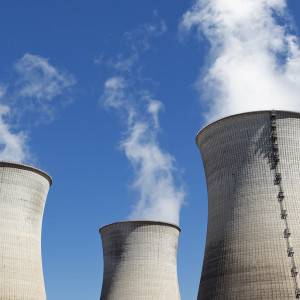Since taking office, President Donald Trump and his administration have made dramatic changes to federal environmental policy. At the same time, they have faced stiff resistance from state governments, who have begun to move into the environmental regulatory space on issues like carbon emissions. Oftentimes these decisions were meant to provide regulation in lieu of federal laws. In one developing case, however, New York and Connecticut are petitioning to compel the federal government to take regulatory action, in a move that has the potential to impact up to nine other states.
“At Governor Cuomo’s direction, New York is aggressively limiting air pollution from multiple sources to protect our communities and the environment. New York is asking the EPA to require these polluters in upwind states to do their fair share and control the air pollution that is impacting our air quality,” said New York State Department of Environmental Conservation (DEC) Commissioner Basil Seggos.
The petition attempts to pressure the EPA into addressing high pollution levels in nine other states. Under the Clean Air Act, states may petition the EPA for a finding that emissions from sources in other states prevent them from reaching air quality standards. New York is claiming that, despite reducing its own nitrogen oxide emissions by 90 percent over the past two decades, poor compliance from states upwind continues to cause elevated ozone levels.
Ozone levels have been a particular concern for New York for nearly a decade. The New York-Northern New Jersey-Long lsland, NY-NJ-CT area has repeatedly been found to be in noncompliance. It was designated previously as in noncompliance under the 2008 ozone standards. More recently, the EPA has indicated that it intends to mark New York as in a state of non-attainment under the 2015 standards as well.
Even as New York and Connecticut proceed with their petition, the two states are also engaged in a lawsuit against the EPA on very similar grounds.
In mid-January, New York and Connecticut filed a lawsuit against the EPA, arguing that the agency had been ignoring its Clean Air Act obligations to reduce smog pollution from upwind states. The suit relies on something called the Good Neighbor Provision, which limits pollution sources within a state from releasing air pollutants at levels that would prevent neighboring states from attaining air quality standards. It followed a suit by New York and eight other northeastern states who wanted to expand the EPA’s Ozone Transport Region. This region is another means of reducing cross-state ozone pollution.
As Administrator Pruitt has repeatedly emphasized, states have a great deal of authority to regulate environmental issues within their borders. The New York case takes that in a different direction, since its end goal is federal regulation of emissions in other states.
Under EPA regulations, the agency has 60 days in order to make a decision on the petition from New York and Connecticut. If it decides to rule in favor of the two states, the identified upwind pollution sources must be shut down within three months, or else operate in accordance with necessary EPA regulations.
This is not the first time that New York has turned to the EPA to attempt to force its neighbors to reduce emissions. New York’s suit to expand the EPA’s Ozone Transport Region occurred in 2013. In 2015, the EPA did conclude that 24 states failed to produce adequate pollution reduction plans. Five of these states are upwind of New York and a similar number are upwind of Connecticut.
Since that study was released, the non-compliant states have failed to act on its findings, the current petition claims.
Areas found to be in noncompliance with ozone level regulations face stricter EPA regulations, including restrictions on infrastructure investment and increased regulatory burdens.
Pruitt has taken strong criticism from environmentalists and state governments for delaying the implementation of stronger air quality standards. Over the summer, the EPA announced that it was extending the deadline for states to develop plans on how they will reach the 2015 ozone designations by one year.
“Under previous Administrations, EPA would often fail to meet designation deadlines, and then wait to be sued by activist groups and others, agreeing in a settlement to set schedules for designation,” said Pruitt at the time. “We do not believe in regulation through litigation, and we take deadlines seriously. We also take the statute and the authority it gives us seriously.”

